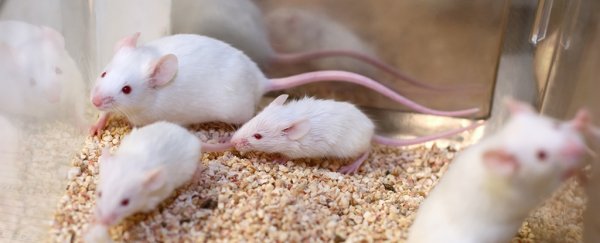The process of freeze drying really is punching above its (very light) weight. It makes for a delicious chocolate-covered strawberry, gives astronauts expanded food options, and now, the technique could be used to store DNA and cell information for cloning purposes.
With a success rate as low as 0.2 percent, freeze drying of cells still has a long way to go before becoming a standard cloning and storage strategy, but it's a really exciting step.
"Maintaining biodiversity is an essential task, but storing germ cells as genetic resources using liquid nitrogen is difficult, expensive, and easily disrupted during disasters," researchers, led by Sayaka Wakayama from the University of Yamanashi in Japan, write in their new paper.
"Here, we show that freeze-dried somatic cells can produce healthy, fertile clones, suggesting that this technique may be important for the establishment of alternative, cheaper, and safer liquid nitrogen-free biobanking solutions."
Freeze drying is a gentle, albeit intense process. Imagine freezing something in several stages until it reaches about -80 degrees Celsius (-112 degrees Fahrenheit), before placing it in a vacuum chamber at high pressure.
The process turns water into ice without large ice crystals puncturing the cell walls, while the pressure turns the water from a solid straight to a gas, which is then sucked out of the product. This happens multiple times until the item is light and crunchy, but still has the majority of its structure intact.
Freeze drying is mostly used in the food industry where it keeps nutrients and flavors intact. It's also used for pharmaceutical products, and even sometimes taxidermy.
Once the freeze-dried item has arrived at its destination, it can then be rehydrated, keeping many properties the same. This is a pretty simple process, and has been happening successfully for decades. But doing this to cells to then use in reproduction is a whole other kettle of fish.
So far, this same team of researchers has experimented with storing freeze-dried sperm in a desk drawer (with no temperature control) for over a year, and on the International Space Station for over 5 years. Both produced viable offspring, although the success percentage was in the teens.
"Freeze drying could be the best way to preserve genetic resources for a long period in a safe, low-cost, and location-independent manner," the researchers write in their paper.
"However, to date, the only cells that have produced offspring after freeze drying are mature spermatozoa. Collecting spermatozoa from infertile males and oocytes/embryos from fertile females is difficult."
When cloning animals, you need a non-reproductive cell (called a somatic cell) with all of the animal's DNA. This nucleus package filled with DNA can then be inserted into an egg cell, and with a bit of messing around, you can start the process of growing a baby.
Cloning isn't the easiest way to store genetic material for the future, but it does allow you to have the entire genetic material of an animal, as opposed to just the half found in reproductive cells.
Currently, somatic and reproductive cells – for biobanks or other purposes – can be stored in liquid nitrogen, which can be quickly raised in temperature to bring the cells back to life.
But the researchers wanted to see how freeze drying stacked up, so they used mouse somatic cells (in this case fibroblasts and cumulus cells), freeze dried and kept at -30 degrees Celsius (-22 degrees F) for up to nine months.
The cells did die and there was some significant DNA damage, but the team managed to extract the rest of the genetic information and place it into new cells, which became early embryo cell lines.
These cell lines then had their nuclear information extracted and inserted into a new embryo, which was able to create cloned mice. So yes, this is not a perfect process. Every step going right – from rehydration, to cell line establishment, to actually growing the cloned mice – only happened 0.2 percent of the time. This places the method at even lower odds of success than the cloning of the sheep Dolly, who only had a 0.4 percent chance of existing.
Some mice also were not proper clones, carrying epigenetic abnormalities due to the DNA damage. In one interesting case, the cell line lost its Y chromosome and went from male to female, so there's plenty more research to be done to finetune this process.
With all that said, if the success rate is eventually improved, being able to clone animals using such degraded cells and DNA would be a boon in other areas too. Over time even the best stored DNA degrades; if we're to have any luck in cloning extinct animals, we'll need to get better at cloning from incomplete or degraded DNA.
This is worlds away from where we are now, but the future is looking interesting.
The research has been published in Nature Communications.
